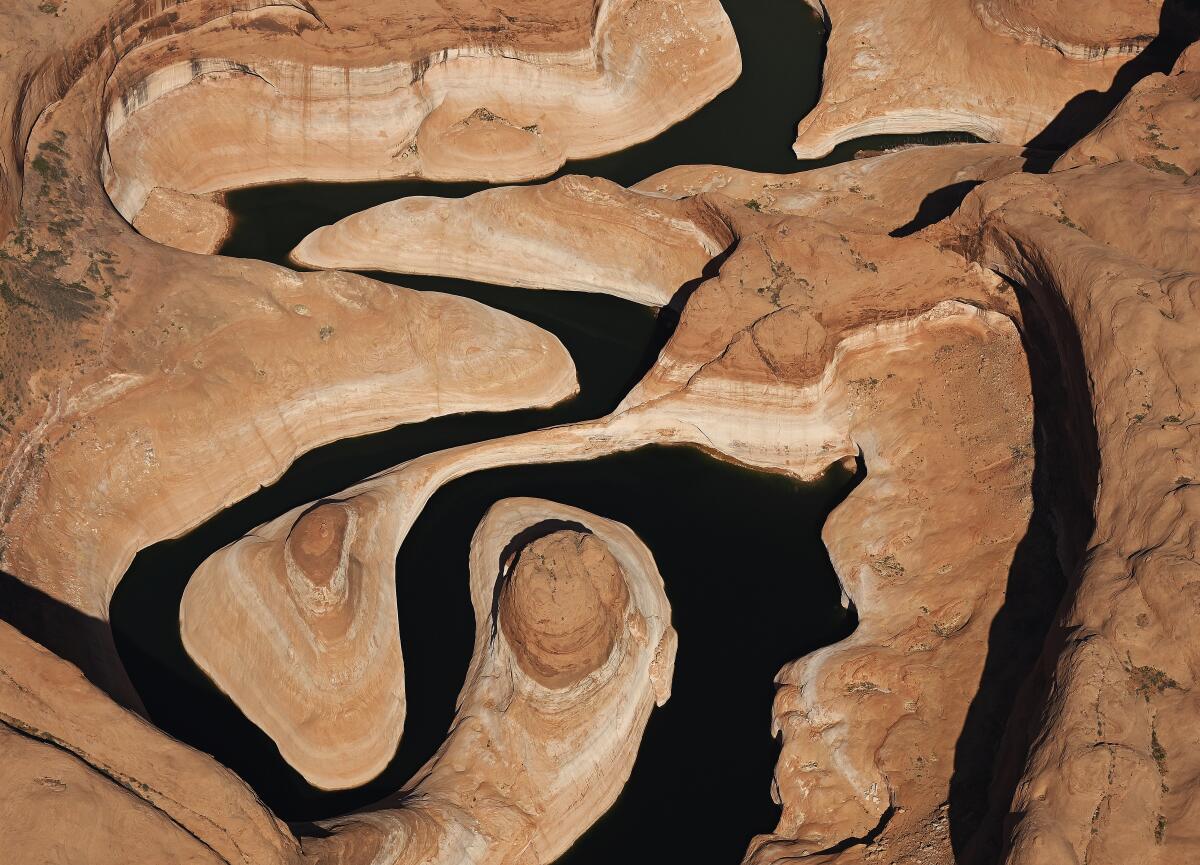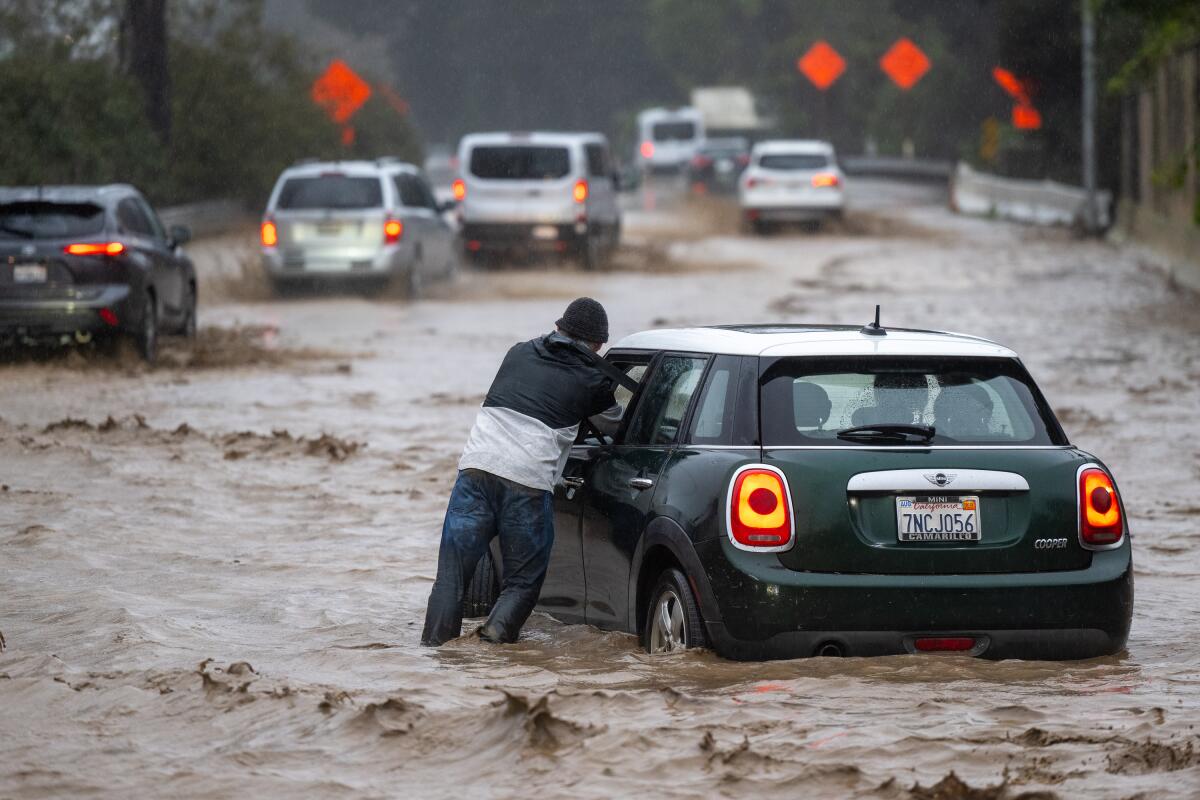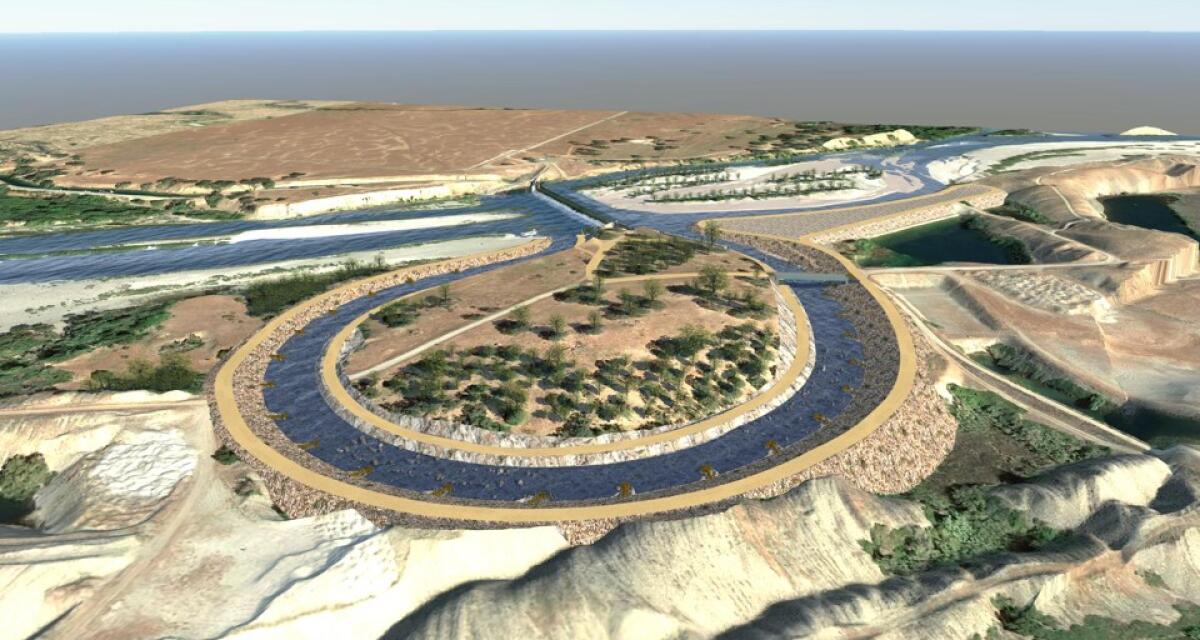Boiling Point: Plight of the condors

- Share via
This is the May 23, 2023, edition of Boiling Point, a weekly newsletter about the environment across California and the American West. Sign up here to get it in your inbox.
Happy Tuesday! It’s Rosanna Xia, coastal reporter for the Los Angeles Times, filling in this week for Sammy Roth.
It’s not easy being a California condor, a majestic (and quite giant) bird that has come to symbolize both a species on the brink of extinction and the hope we still have for the future.
There are wind turbines to avoid and lead poisoning from hunted animals. I also wrote last year about a mind-bending study that found that DDT — a particularly problematic pesticide dumped decades ago off the California coast — is still accumulating in this iconic species at the very top of the food chain.
And now, alas, a deadly virus has compounded the plight of the condor. An outbreak of avian influenza has killed more than 20 condors in Arizona and Utah since March, my colleague Louis Sahagún reported, and at least two at a rescue facility have tested positive for the virus.
This bird flu, dubbed H5N1, has struck a stunning number of birds across the United States in the past year and a half — including 58 million commercial chickens and turkeys (remember the Thanksgiving shortage?) that had to be euthanized to prevent the spread of the disease.
In an effort to save the few remaining condors left on our planet from contracting this virus, federal officials just granted emergency approval to a vaccine for the critically endangered species. A pilot study is set to begin in American black vultures to check if the vaccine — which was originally developed for poultry — will be safe for wild birds.
Why a vaccine? As Ashleigh Blackford, a U.S. Fish and Wildlife official overseeing the effort, explained on NPR’s All Things Considered: “Ideally, over time, we reach an equilibrium with those viruses, and the birds gain natural immunity, and they’re able to rebound. [But with] populations like the California condor that are very small ... we don’t have numbers that can sustain the time that it might take for these populations to gain immunity.”
Indeed, there were only 22 condors still in existence back in the 1980s when wildlife officials rushed to capture every last bird in hopes of breeding the population back to vitality. (Saving this species is particularly tricky: It takes more than six years before a condor is ready to reproduce, and even then, the birds tend to lay only one egg every other year.)
After decades of painstaking work, there are now at least 500 California condors with us on Earth. A rescued egg, in fact, just hatched this month, according to Smithsonian Magazine and Popular Science. Wildlife officials had found the egg in a nesting cave they suspected was contaminated with the virus, because the hatchling’s mother had contracted the flu and died.
The baby chick, for the record, has tested negative so far and is now bonding with a stuffed condor:
A conservation scientist once told me he sees the condor as inseparable from the health and future of our environment. Commanding the top, top, top of the food chain, both along the coast and inland, Gymnogyps californianus is a striking reflection of our ecosystem.
If we are able to save the California condor, he said, that means we are also saving so much other life along the way.
On that note, here’s what else is happening around the West:
TOP STORY

Breakthrough Colorado River deal announced, huge water cuts ahead: The seven states that depend on the overallocated river have reached a historic agreement on cutting water use over the next three years. Officials say much of the reductions will come by paying agricultural landowners and irrigation districts to conserve water, using $1.2 billion from the Inflation Reduction Act. My colleague Ian James breaks down the details of this major milestone to prevent reservoirs from falling to dangerously low levels.
HERE COMES EL NIÑO
After a long hiatus, El Niño is showing signs of a strong return in 2023. For California, which is already bracing for devastating floods from record-breaking snowmelt — a big El Niño could bring another winter of intense precipitation, along with landslides, floods and intense coastal erosion. The Times’ Hayley Smith reports on the latest projections.
New research shows that El Niño could cost the global economy trillions of dollars when you take its lingering effects and damage into account, Kasha Patel reports in the Washington Post. And although El Niño is a naturally occurring climate pattern, another study points to further evidence that fossil-fuel emissions have made El Niños more extreme, more often, according to this discussion in The Conversation.
El Niño also means it’s going to get hot, hot, hot — and “push global temperatures into uncharted territory,” Justine Calma reports for The Verge. In the words of the World Meteorological Organization’s secretary-general, who warned that global temperatures will likely surge to record levels in the next five years, “this will have far-reaching repercussions for health, food security, water management and the environment. We need to be prepared.”

POLITICAL CLIMATE
Montana’s new anti-climate law may be the most aggressive in the nation, Kristoffer Tigue reports in Inside Climate News. Signed into law this month, the Republican-backed legislation prohibits state agencies from considering climate change when permitting large projects (such as coal mines and power plants) that require environmental reviews.
And as Scott Dance notes in the Washington Post, Montana is emerging as a must-watch climate background. In addition to the new anti-climate law, a first-of-its-kind lawsuit testing whether the state constitution requires officials to combat climate change goes to trial next month.
Speaking of first of its kind, Capital & Main’s Aaron Cantú dived into the details on SB 556, a bold bill introduced in California that would give people who live near oil wells the right to hold drilling companies liable for their illnesses — with penalties amounting to as much as $1 million. After much anticipation, the legislation was held on “suspense file” late last week by the Senate Appropriations Committee, which means the bill cannot move forward this year.
THE ENERGY TRANSITION
More than a decade in the making, one of the nation’s largest power lines just got approved by the federal government. The multibillion-dollar SunZia transmission project will send primarily wind-generated electricity from the rural plains of New Mexico to big cities in the West, Susan Montoya Bryan reports for the Associated Press.
Hailed as the largest single investment in rural electrification since the New Deal, the Biden administration is kicking off the awards process for nearly $11 billion in funding to electrify and decarbonize rural parts of the United States. More details from Brian Dabbs in E&E News.
California needs a lot more solar. Why not put panels along highways and parking lots? The Los Angeles Times editorial board dove into this question raised by a bill, SB 49, working its way through the state legislature.
It could cost as much as $21.5 billion to clean up California oil and gas wells. The fossil fuel industry won’t make enough money to pay for it, according to an analysis commissioned by Carbon Tracker Initiative, a financial think tank that studies how transitioning away from fossil fuels can affect the economy. Mark Olalde looks at the math for Propublica.
In other economic news, check out Erin Stone’s piece in LAist on all the jobs being created in Los Angeles due to the state’s zero-emission-vehicle mandates. Community colleges across Southern California are training a new workforce, and studies have found that the electrification transition is expected to generate tens of thousands of jobs — with projections for 2050 about double the potential job creation as traditional diesel.
SOME DAM GOOD (OR BAD) NEWS

California unveiled a $60-million plan to build a channel that will allow imperiled salmon and sturgeon to swim around a dam on the Yuba River that has impeded fish passage for more than a century. But environmental groups say they were locked out of the decision-making process — and that removing the dam would be a better solution for the environment. My colleague Alex Wigglesworth has the details.
Farther north in California, a coalition of fishing and conservation groups is suing PG&E over the operation of two dams on the Eel River. The Eel River was recently named one of America’s Most Endangered Rivers in 2023, in part because of the ongoing controversy. More details in the Mendoccino Voice by Kate Fishman.
Meanwhile, efforts to dismantle the long-obsolete Rindge Dam on Malibu Creek — which has impeded the federally endangered Southern steelhead — continue to move forward, albeit slowly. The dam’s removal would open up 15 miles of habitat in the Santa Monica Mountains. Will Callan reports on the latest for KCRW.
ONE MORE THING
If you’re in Los Angeles this week and want to geek out on documentaries with me, PBS SoCal and KCET’s Earth Focus Environmental Film Festival is featuring a number of films that reflect on our relationship with nature.
There’s a screening tonight at 7 of “Deep Rising,” a documentary on deep-sea mining that first made a splash at the 2023 Sundance Film Festival. An impressive lineup of faculty from UCLA’s Institute of the Environment and Sustainability will then lead a post-screening discussion and audience Q&A.
And I will be moderating a conversation on Thursday, May 25 at 7 p.m. after a sneak peek of the new series “WILD HOPE,” by one of the studios that co-produced the Oscar-nominated documentary “All That Breathes.” Come with questions for Sean B. Carroll, the head of HHMI Tangled Bank Studios, and Vanessa Castle, a fish and wildlife technician and member of the Lower Elwha Klallam Tribe; it should be an inspiring evening!
Reserve your spot here — both screenings will be held at the Westwood Landmark theater, and there’s no charge for tickets. Long live public programming!
I’ll be back in your inbox on Thursday, and Sammy returns next week. To view this newsletter in your Web browser, click here. And for more stories about our coast and ocean, follow me on Twitter or Instagram at @RosannaXia.
Toward a more sustainable California
Get Boiling Point, our newsletter exploring climate change, energy and the environment, and become part of the conversation — and the solution.
You may occasionally receive promotional content from the Los Angeles Times.






